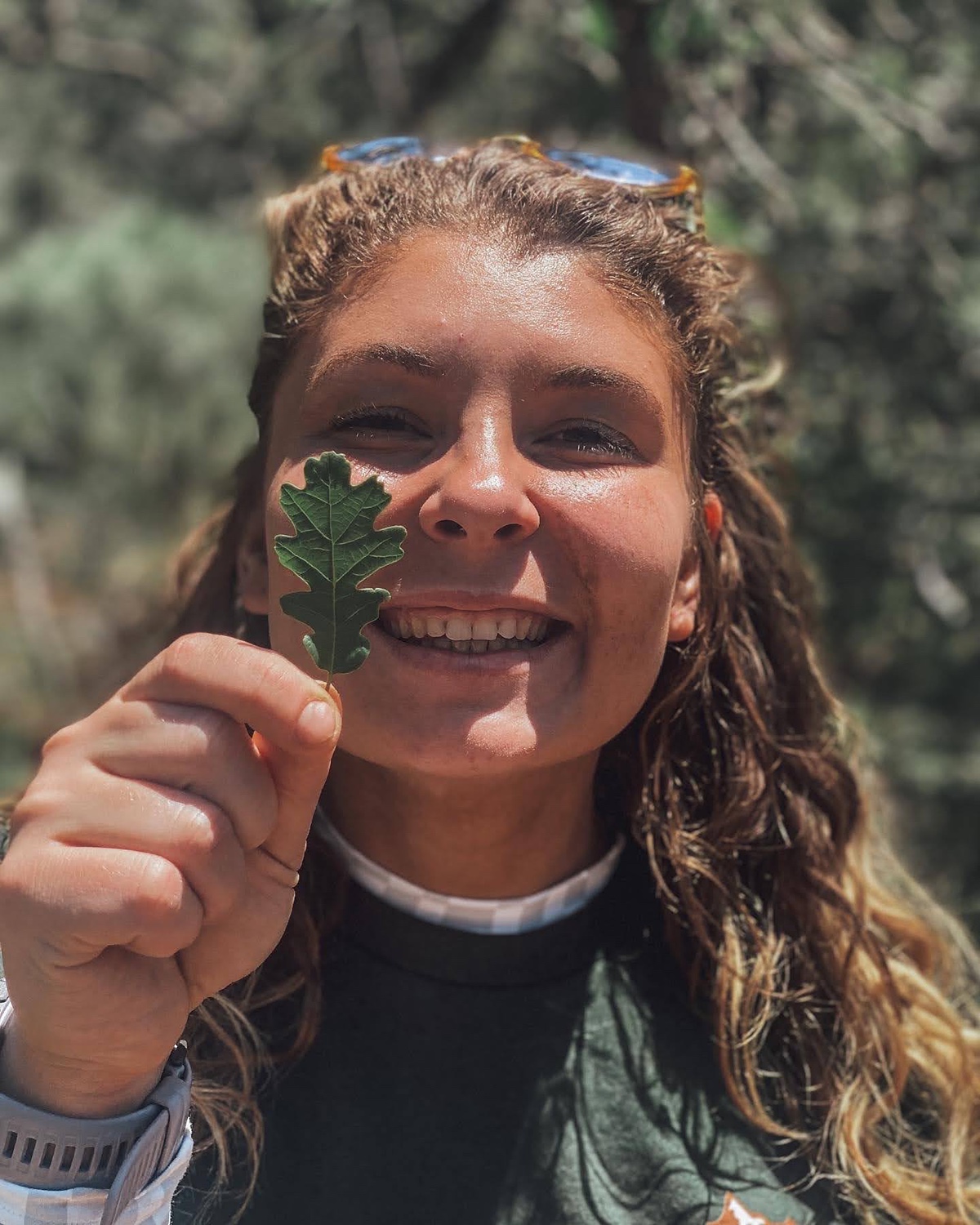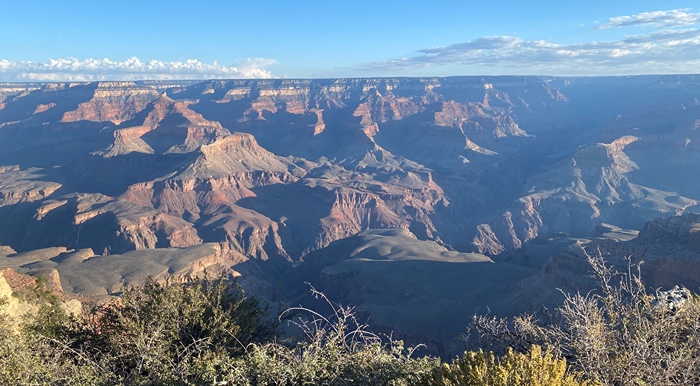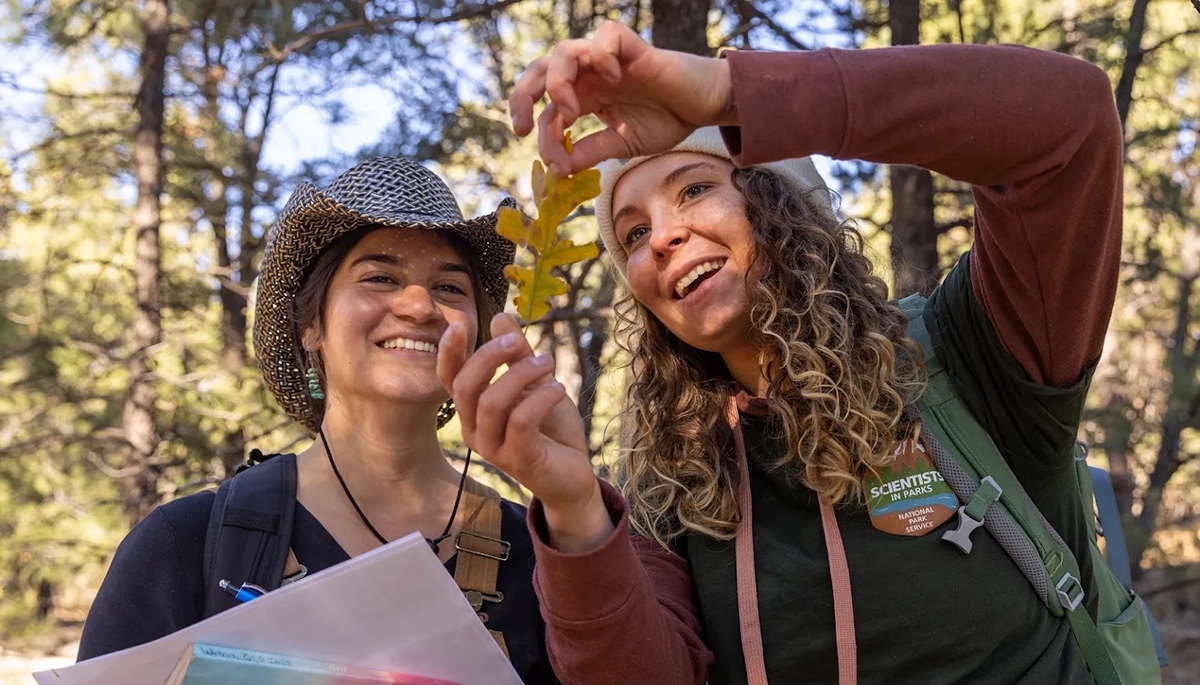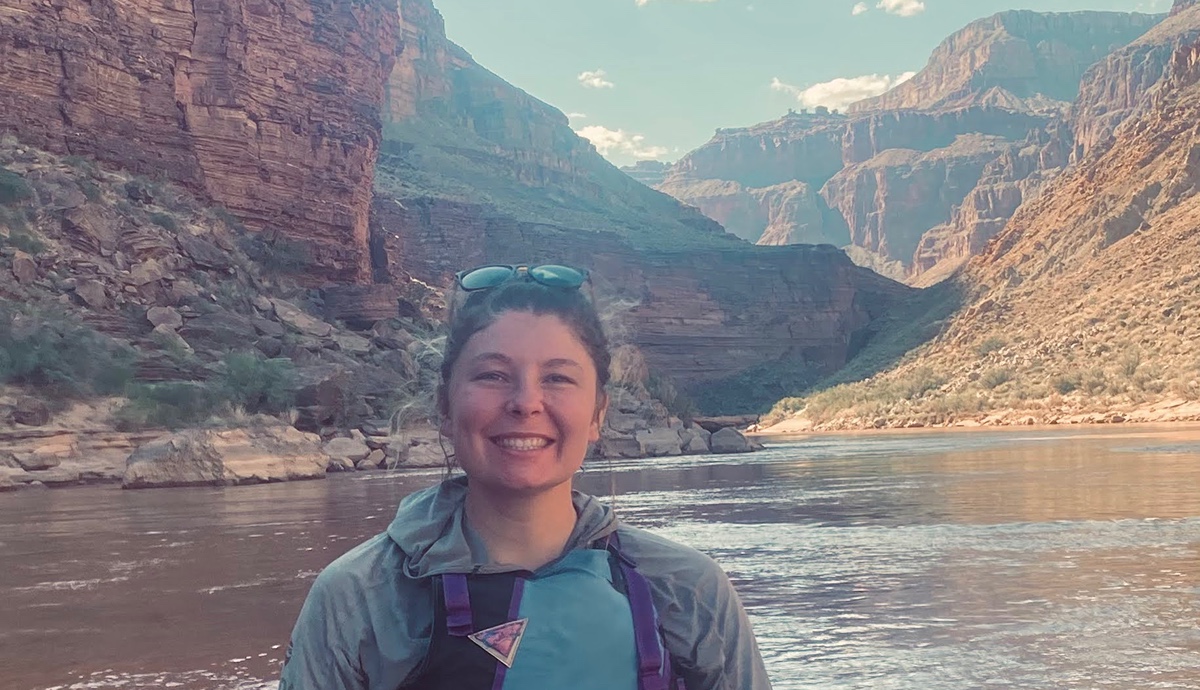For the love of the land
Deep connection to America’s national park drives NRES alumna in her work and research
2016 was the first time that Jalyn Gearries, a Natural Resources and Environmental Science (NRES) alumna and Indiana native, ventured west of the Mississippi and experienced the Grand Canyon. This was the second stop on a three-week national park tour with her family, and it was that one stop that changed everything for her.
Gearries and her family ventured to a site nearly 60 miles from the closest paved road known as the "Tuweep Campground”. It was here at this expansive view of this natural wonder that she instantly knew she wanted to help preserve historical lands for the people who had come before her and for all of those who would come after.
At the time, Gearries was a first-year student majoring in animal sciences. But her trip shifted her dreams. "I didn't know up to that point what I wanted to do for a career, but after that trip, I knew I wanted to focus on environmental science, ecology and land protection. I knew it was important to help protect that land I had fallen in love with." She soon transferred into the NRES program.
Gearries credits NRES with preparing her for the work she does today. "NRES allowed me to become a multidisciplinary scientist and to be able to choose how I develop my understanding of environmental science based on taking classes from different colleges. That background has enabled me to get into agroecology, which was the starting point in my current career."
After graduating from Purdue, Gearries gained some industry experience but knew she wanted to continue her education. In 2022, the Hoosier packed her bags and headed west to pursue her dreams and pursue a master's in climate science solutions at North Arizona University in Flagstaff.
Instead of a completing a thesis for her master’s, she completed an internship project focused on tree phenology. Where? You guessed it: the Grand Canyon. From that project, she learned something she had never known about herself.
"I discovered I liked working with data and coding. By the end of the year, I had decided that I wanted to pursue research, and that I specifically wanted to be a research ecologist for a government agency."
Gearries also started her career as an employee of the National Park Service, working as an intern with the Ecological Society of America's (ESA) Scientists in Parks Fellows Program. To date, Gearries' favorite project with the National Park Service is this phenology and climate change project. She has presented her research at the Ecological Society of America's annual meeting and two other conferences.
"This was a 12-week internship, and not only did I fall more in love with the Grand Canyon, but I also fell in love with eco informatics. I'm very proud of how much I grew as a young scientist during that summer, as well as the connections I made. "
In the summer of 2023, Gerries worked full-time for the park service as a seasonal biotech invasive species crew lead before stepping down in the fall to start her PhD program, fully funded by the National Park Service, National Science Foundation, and Bureau of Reclamation in part with the Glen Canyon Dam Long-Term Experimental and Monitoring Project (LTEMP).
She is currently in her second semester as a PhD student at the School of Informatics, Computing, and Cyber Systems at North Arizona University, where her research is focused on riparian vegetation and invasive species found at the bottom of the Grand Canyon along the Colorado River.
She intends for her research to benefit the Grand Canyon, the National Park system and their research efforts. "I am using remote sensing and satellite imagery to detect the efficacy of invasive plant or invasive vegetation treatments on the Colorado River in the Grand Canyon. This high-resolution satellite imagery is helping us look at how native and introduced plant populations are changing in the canyon environment. I am very excited about what I will produce for my dissertation. I've taught myself three code languages in my first year of my PhD and continue to develop many experimental designs in partnership with my research committee and National Park Service land management.”
As Gearries' time in the park grows, so does her connection. Over the past few years, her research and work has given her the opportunity to go on four different canyon river trips and to travel to the bottom of the canyon numerous times. Each trip brings new experiences and a greater drive for her work.

"Every day, I have to pinch myself because I get to work on something I am so passionate about. I get to go to work somewhere where I truly love the land. I am fortunate to have a connection to the features, to the rivers, to the scientists, and to the native tribes that have called the Grandy Canyon home for time immemorial. Our National Park system preserves that history and honors both the physical nature and the cultural history. I hope my work can contribute to preserving that history for generations to come, and I feel truly honored and fortunate to do that in a place I feel so connected to. It's an actual dream come true."












